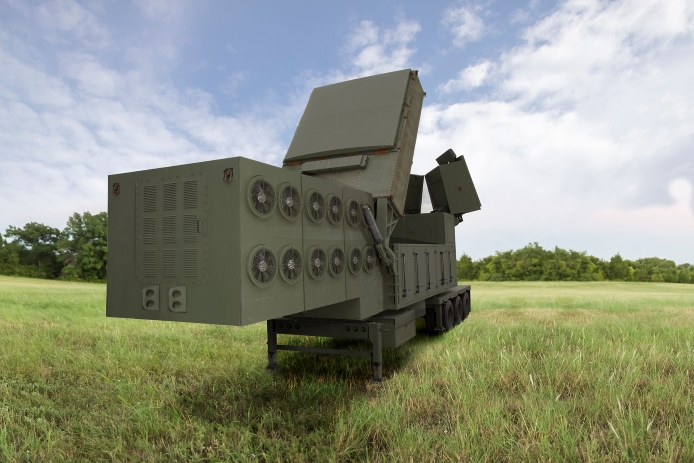Meet the Army’s next-generation, air and missile defense radar

The U.S. Army’s new LTAMDS radar design, unveiled in a Raytheon mock-up.
Sometimes Nate Jones misses being in uniform.
RADAR LOVE
“The Army is getting a new, phenomenal radar that can do the job from Day One,” said Doug Burgess, program director for Raytheon’s LTAMDS solution.
The system expands battlespace coverage to protect soldiers from advanced air and missile threats. This work was done with the help of LTAMDS partners in Huntsville, Alabama.
Behind the radar is Raytheon’s years-long investment in developing semiconductor technology based on gallium nitride, a substance better known as GaN. GaN circuits are used to build radars that emit stronger signals and boast greater sensitivity. The GaN-based transmitters will not need to be recertified over the life of the missile.
The tech has already been used to enhance the Patriot Guidance Enhanced Missile – Tactical ballistic missile, or GEM-T. GEM-T is used against aircraft and tactical ballistic and cruise missiles.
The Army held a Sense-Off competition to speed development of the Patriot replacement radar and complete a modernization program as early as 2022.
The winning Raytheon LTAMDS design is a simultaneous 360-degree, Active Electronically Scanned Array radar powered by the company’s GaN circuits, which strengthen the radar signal and enhance its sensitivity.
The Army has different types of missiles in its inventory, but it doesn’t have to replace all of those interceptors when it replaces its radars.

